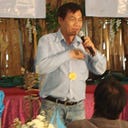THE GREATEST NAVAL COMMANDER OF ALL TIME
ACCORDING TO ADMIRAL TOGO AND MYSELF
❤ a brief essay by Jose Rizal M. Reyes for FOSROD / November 11, 2015
Japanese admiral Togo Heihachiro (born 1848, died 1934) was so respected globally among naval circles that when he died in 1934 at the age of 86, he was given a state funeral by his country and the naval parade held in Tokyo Bay in his honor was graced by naval ships from the US, the UK, France, Italy, China and the Netherlands. Togo is the celebrated victor inof the Battle of Tsushima (fought on May 27–28, 1905) against a naval fleet of Tsarist Russia. His victory ushered Japan as a major global power.
In his lifetime, Togo (who had a grandson who died in combat in the Battle of Leyte during World War II) was compared to the famous British admiral Horatio Nelson (born 1758, died 1805) and he appreciated the comparison. Yet when he was spoken to be at par with the lesser-known Korean admiral Yi Sun-sin (born 1545, died 1598), Togo protested, feeling himself unworthy to be regarded on the same level with the undefeated Yi who won at least 23 naval battles.
Interestingly, Togo wrote in his diary: “I am firmly convinced that I am the re-incarnation of Horatio Nelson.” And just as interestingly, the Korean admiral Togo so highly admired happened to have won his astonishing successes against Japanese naval forces.
The great thing about Admiral Yi — whom Togo, in effect, regarded as the greatest naval commander of all time — is that he designed technological innovations to help Korea become victorious in battle.
The legendary turtle ships (“geobukseon” in Korean) for which Yi is known is said to be based on earlier Korean models which he merely resurrected and improved. These turtle ships, which comprised but a fraction of his total forces, were quite effective in leading his naval assaults as well as in foiling Japanese boarding tactics. I suspect those Japanese boarding tactics were inspired by the Roman naval victory over its great rival Carthage. Such boarding tactics succeeded against a Korean commander who commanded in the Battle of Chilchonryang (fought on August 28, 1597) a naval fleet built and nurtured by Yi. But such boarding tactics would never do against Yi himself.
Yi also saw to it that his cannons had a longer range than those of the enemy. Reading a biography of the Korean admiral, I readily and perfectly understood the huge advantage of having longer-range cannons because the principle involved is similar to one of the insights I had gained while playing the computer game Red Alert 2.
Yi’s technological advantage over the Japanese is not necessarily absolute technological advantage. It was more like the kontrapilo sort of technological advantage. We Filipinos have this term and concept “kontrapilo” (probably of Spanish origin and the probable equivalent of “counterfoil” in English) wherein an advantage is peculiarly bilateral in nature, not absolute. It’s just like the hand game jack en poy — or stone, paper and scissors — where the superiority of, say, stone over scissors is not absolute but merely bilateral because scissors can be defeated by rock which in turn is inferior to paper.
Although Yi sought technological advantage, his success in many battles can be ascribed primarily to his superior tactics and strategy. After the disastrous Battle of Chilchonryang, the Korean fleet of 150 warships was reduced to 13. It was the only Japanese naval victory during that war and Korea was not even the real target of Japan … but China. Korea was merely an obstruction that must be cleared so the Japanese could smoothly invade China. Anyway, when the Korean king and his royal court heard of the defeat in Chilchonryang, they quickly pardoned Yi (a victim of intrigue) and reinstated him as naval commander. Then with the 13 surviving ships, none of which was turtle ship, Yi led the Koreans to victory against more than 300 Japanese warships in the Battle of Myeongnyang (fought in October 26, 1597).
In my humble opinion, the Battle of Meongyang — fought barely two months after the disastrous Battle of Chilchonryang — qualifies as the greatest and most brilliant naval victory of all time. It is also a big rebound and turnaround for the Korean kingdom of Joeson.
I respectfully recommend to Filipino naval commanders and to all AFP officers and military cadets the serious study of the life and legacy of Admiral Yi Sun-sin of Korea so that he may inspire them with his spirit of victory, humility, dutifulness and nobility. Admiral Togo could easily recognize the naval talent of Admiral Yi because like the latter, the former was not only a successful naval commander but also a gentleman imbued with an honest and honorable character.
I plan to lengthen this essay some other time. I guess it would be wonderful if I add to it a brief sketch of my evolving “Archipelagic Defense Doctrine” that I am putting up together for the consideration of our country. The basic tenet of the ADD is that the primary goal of Philippine national defense is to be able to sink anything that swims and shoot down anything that flies. If that is achieved, then our people need not worry too much about enemy boots marching on our land and enemy tanks rolling on our soil.
Let me end this essay for the meantime with a happy quip. You know, inasmuch as Admiral Togo was convinced that he was the incarnation of Admiral Nelson, I might as well begin entertaining the fascinating idea that I am, ehem, the incarnation of Admiral Yi!
